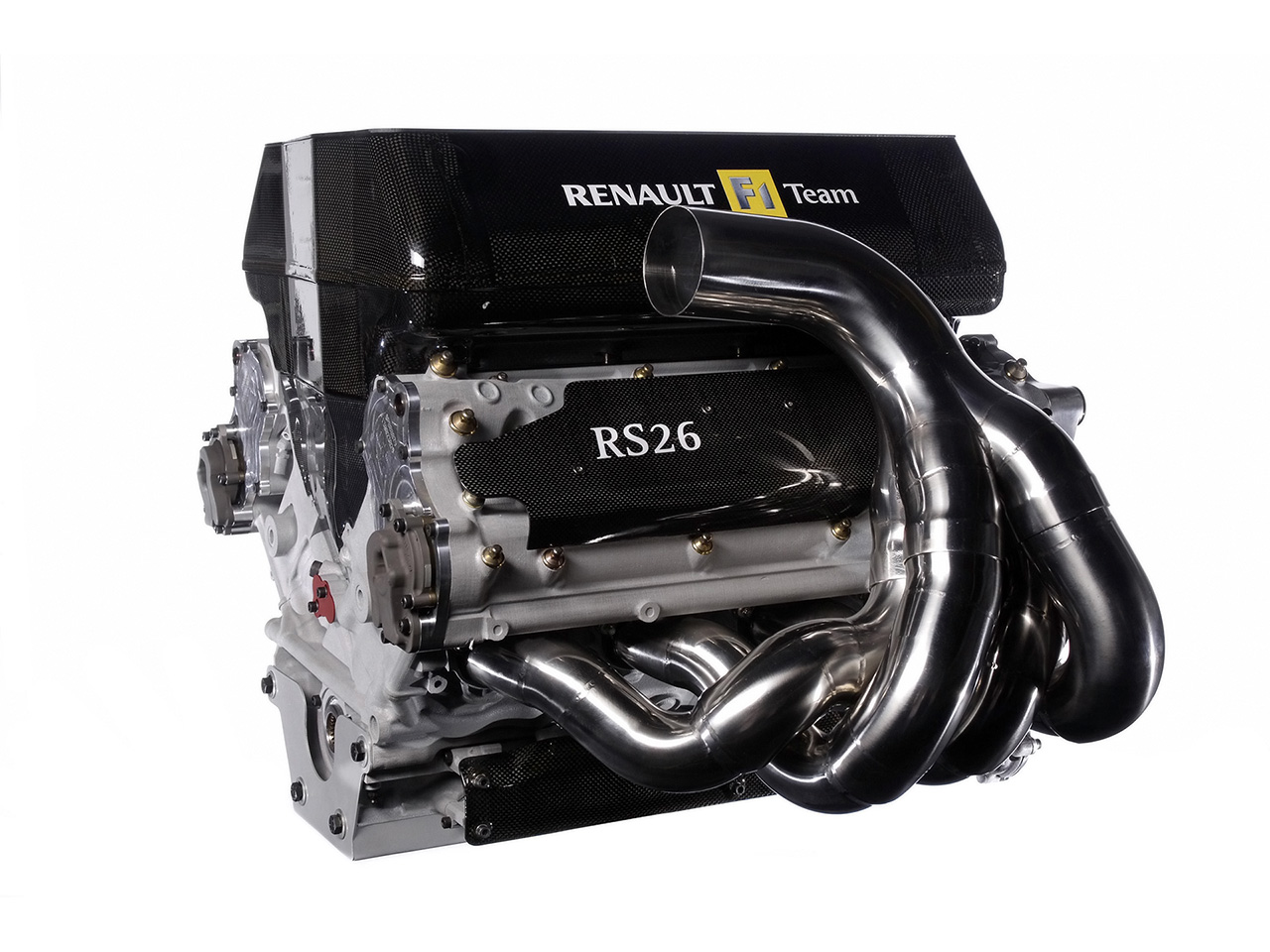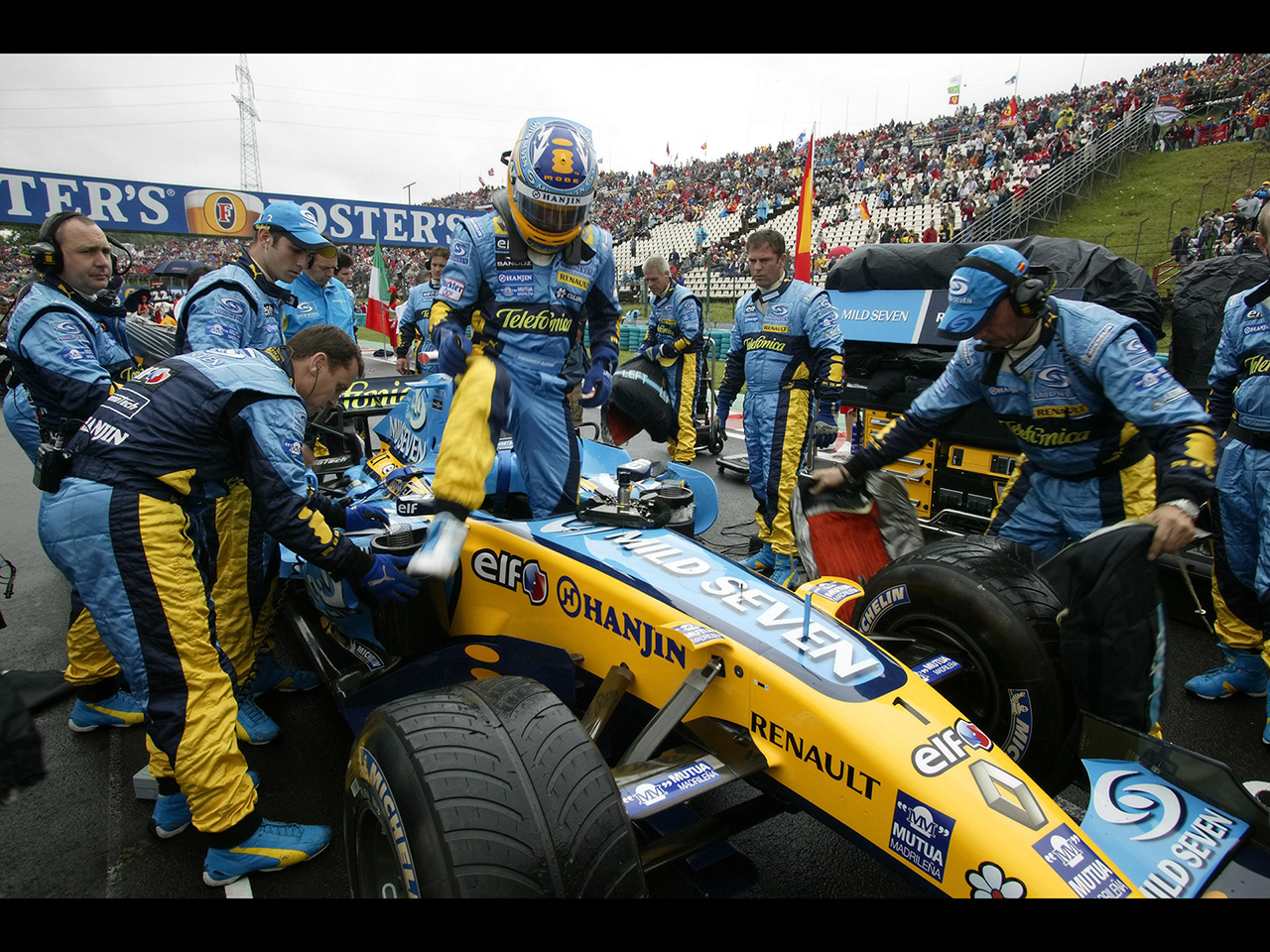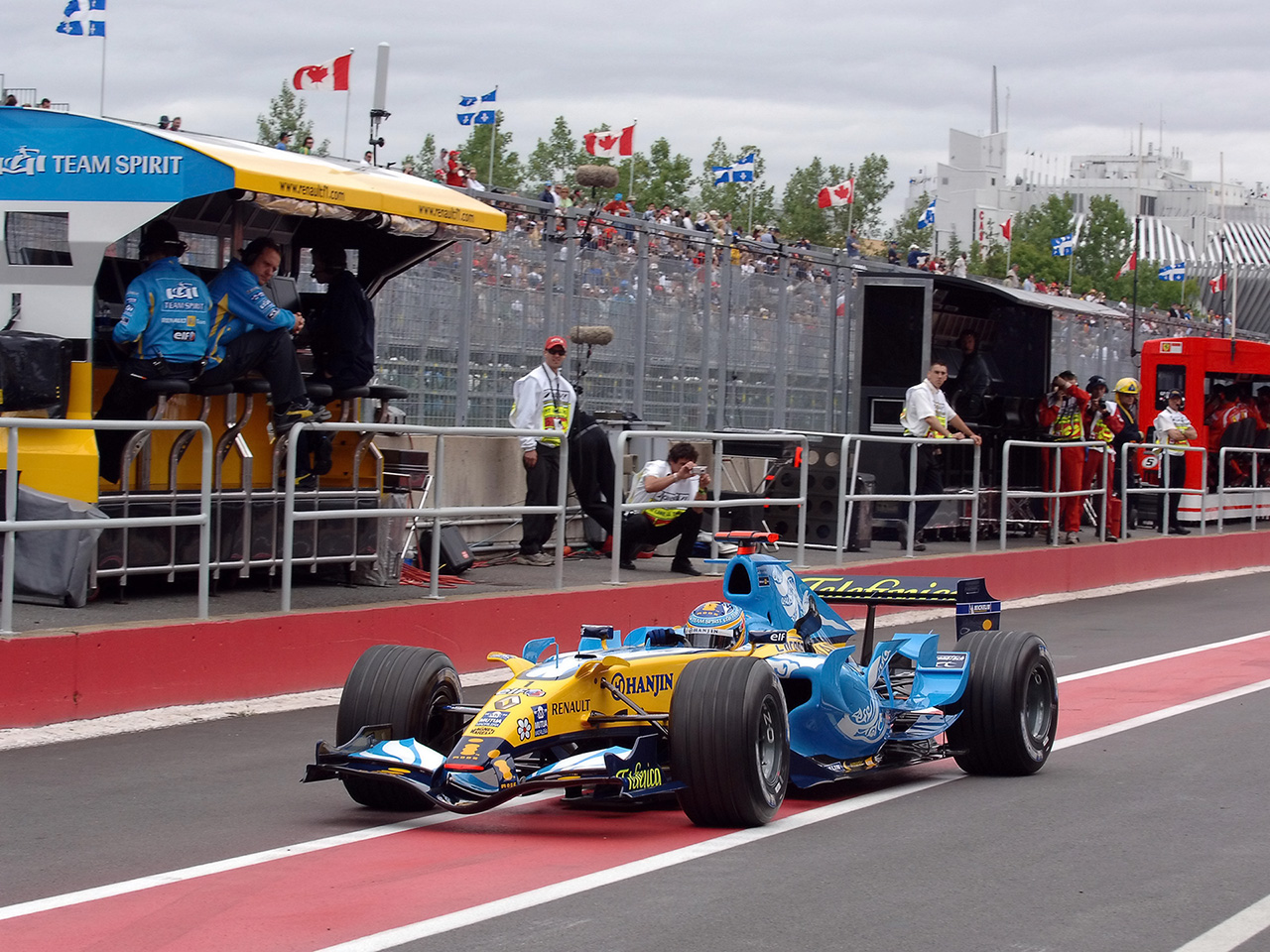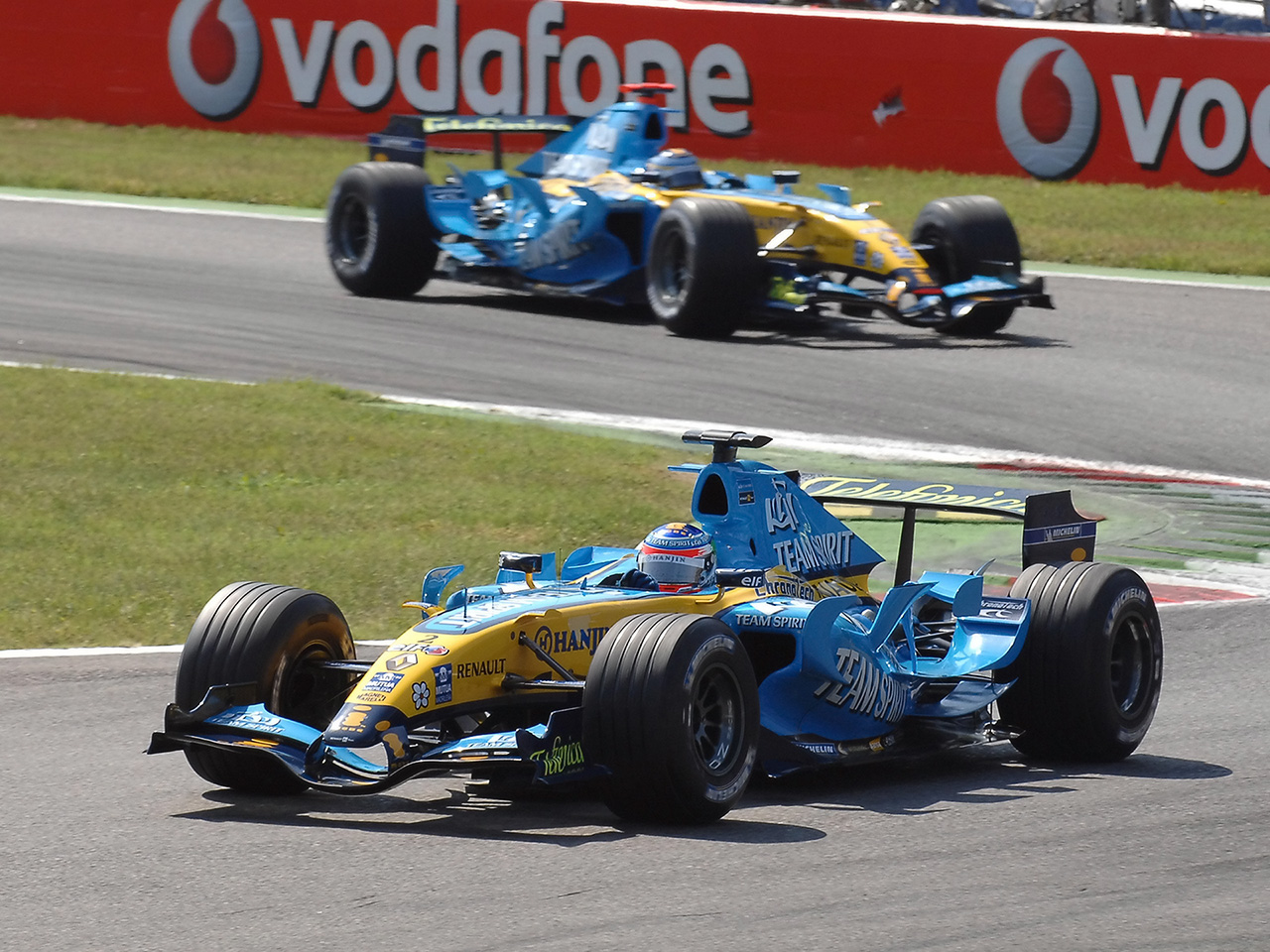2006 Renault F1 R26
(from Renault Press
Release) World Champions!
After a perfect performance in today's Brazilian Grand Prix,
Renault has won the 2006 FIA Formula 1 Constructors’ World
Championship and Fernando Alonso is the new 2006 FIA Formula 1
Drivers’ World Champion. The Renault F1 Team has repeated its 2005
double after a highly spectacular season, during which the team
again proved its sporting, technical and human qualities by
producing the R26 single-seater that has been consistently fast and
reliable.
Carlos Ghosn declared: "Renault's success in winning both
championship titles for the second year in a row represents a huge
achievement. This is the victory of the Renault brand; a brand that
is enthusiastic, innovative and capable of commanding
latestgeneration technologies. And Renault triumphed with only the
fifth-largest budget on the starting grid. Quite an achievement!"
An exciting, roller-coaster season, from Bahrain all the way to Brazil
Fernando Alonso made a fantastic start to the season, with six
victories and three second places. By June, he held a strong lead in
the championship, with a points total of 84 out of a possible 90.
At Hockenheim, the Ferraris finished first and second. In Turkey, a
titanic struggle between Fernando Alonso and Michael Schumacher saw
the Spaniard finish second, behind a Schumacher who was more
determined than ever. Spectators the world over were thrilled by the
battle between Alonso and Schumacher for the title, while their team
mates, Fisichella and Massa, fought it out for third and fourth
places.
The Renault-Michelin combination was again dominant in China, but
Alonso had to settle for second placed, behind Schumacher. After the
Chinese round, the two title challengers had exactly the same number
of points and Renault regained the lead of the Constructors
championship. The Japanese Grand Prix saw a reversal of Ferrari's
fortunes and both the Renault F1 Team drivers finished in the top
three for the fourth time this season.
At the end of a Brazilian Grand Prix that matched the rest of the
season for excitement, the second and sixth placed finishes of the
two Renault drivers were enough to win both titles for the brand.
Perfect chemistry for an exceptional performance
This double title is the fruit of the efforts made by the
international teams working in Viry- Châtillon, France, who design
the RS26 engine, and in Enstone, UK, who are in charge of the R26
chassis, both under the chairmanship of Alain Dassas and the
management of Flavio Briatore. The outstanding performance and
reliability of the Renault R26 are founded on the talent of the
team's two drivers and the skills of the entire engineering staff.
This year's title has gone to the best chassis-engine combination.
The team's technical and human achievements are also the fruit of
strict and thorough economic management. The Renault F1 Team has
carried off both titles with just the fifth largest budget in
Formula 1.
Quality and reliability: two key concepts in F1 and series produced vehicles
Renault's double title underscores the brand's technological and
engineering excellence and its outstanding reliability, which is
supremely important in F1. Winning both titles in two consecutive
seasons is a clear demonstration of the robust design, production
and development processes applied to the engine-chassis combination.
The same high demands for reliability and quality are shared by the
Formula 1 single-seaters and Renault's series produced vehicles. As
part of Renault Commitment 2009, the brand has committed to placing
Laguna in the top three vehicles in its segment in terms of quality:
a goal that the Renault F1 Team shares by aiming for a podium finish
in every race. While the circumstances may be different, it is the
same approach and the same quest for perfection that drive all of
the teams working at Renault.
For Renault, Formula 1 is a unique testing ground for technical and
organizational solutions, such as 3D prototyping technology,
software and hardware or the organization of project teams. These
solutions are then rolled out in the engineering organizations.
Inversely, some fifteen experts in aerodynamics, engineering and
information technology from Renault's Technocentre joined the F1
team in 2002. Their experience in a working environment where
development cycles are extremely short – one year – has been an
opportunity to learn how development lead-times can be shortened in
the automotive industry.
Another example in the current range is the venturi on Clio Renault
Sport, which was directly derived from a system used in Formula 1.
Victory in Formula 1: a driving force for the entire Renault Group
By triumphing on all five continents, the Renault F1 Team acts as
Renault's international flagship, especially in countries where the
group's reputation is gaining strength. The F1 Team presents the
public with an image of quality, enthusiasm and success that paves
the way for the introduction of the brand's vehicles on
international markets. Customer surveys have shown that success in
Formula 1 has contributed to improving the image of the Renault
brand. 63% of the general public believes that Renault's world
titles are a sign of the brand's reliability, quality and its
technological edge.
This series of victories has stirred unprecedented interest amongst
Renault's employees, who are proud to work for a double world
champion. Yet again, Renault has risen to the toughest of challenges
with passion and enthusiasm.



